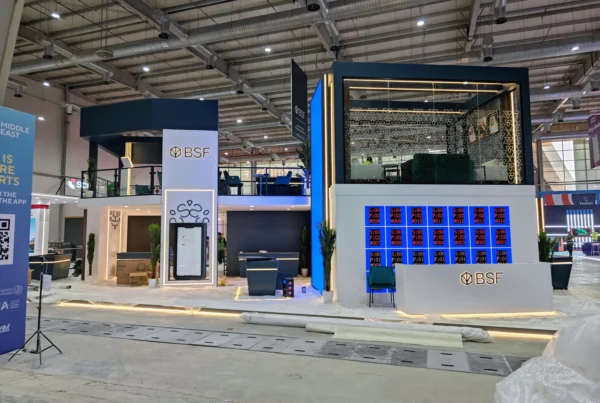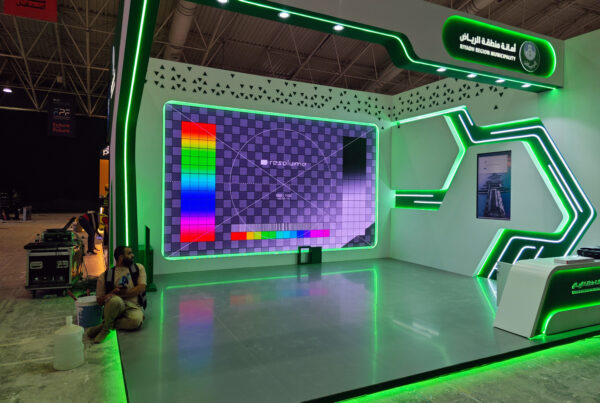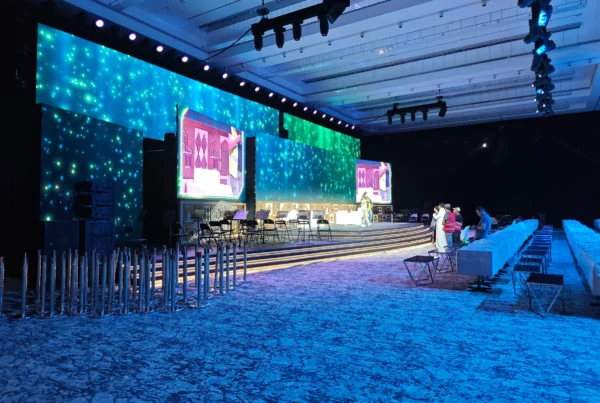Immersive Interactive Technology for Events: The Key to Memorable Brand Experiences
(For more insights, check out the related article: The Future of Immersive Event Technology: How Unreal Engine Shapes Tomorrow’s Digital Twin Real Estate Experiences)
As live experiences become more dynamic and attendee expectations rise, immersive event technology is taking center stage. From trade shows to corporate expos, brands now rely on interactive technology for events to go beyond static visuals and engage audiences on a deeper level. This shift isn’t limited to entertainment—digital twin real estate applications are also harnessing immersive event tech, allowing stakeholders to explore properties virtually and interactively.
In this updated guide, we’ll explore how immersive event experiences enhance brand impact, the tools driving these transformations, and practical ways to overcome challenges. Ready to discover how event interaction technology can redefine the way you connect with audiences?
Understanding Immersive Event Technology and Its Impact
Immersive event technology merges the physical and digital worlds, delivering personalized, interactive, and memorable encounters. By leveraging platforms like Unreal Engine, event planners and marketers can create visually rich environments that captivate attendees from the moment they arrive. Whether it’s immersive solutions for product launches or digital twins simulating real estate projects, this technology enables participants to control their narrative and dive into content at their own pace.
For insights into how these tools shape brand experiences, explore our article on Immersive Interactive Technology for Events: The Key to Memorable Brand Experiences.

Core Benefits of Immersive Event Tech
- Deeper Engagement:
Unlike traditional displays, immersive event tech encourages exploration. Attendees interact with AR/VR installations, digital twins, or interactive kiosks, making the experience feel tailor-made rather than generic. - Emotional Resonance:
By integrating visuals, sound, and touch, interactive event technology appeals to multiple senses. Such multisensory integration leaves a lasting emotional imprint, boosting brand recall long after the event ends. - Flexibility and Scalability:
From mobile devices to large-scale LED walls, immersive solutions adapt to varied event sizes and formats. This scalability ensures that whether you’re hosting a small investor meeting or a large hybrid conference, the technology can grow with your vision. - Data-Driven Insights:
With real-time analytics, event organizers can understand user interactions and preferences instantly, optimizing the experience mid-event. This level of adaptability translates to more effective storytelling and higher conversion rates.
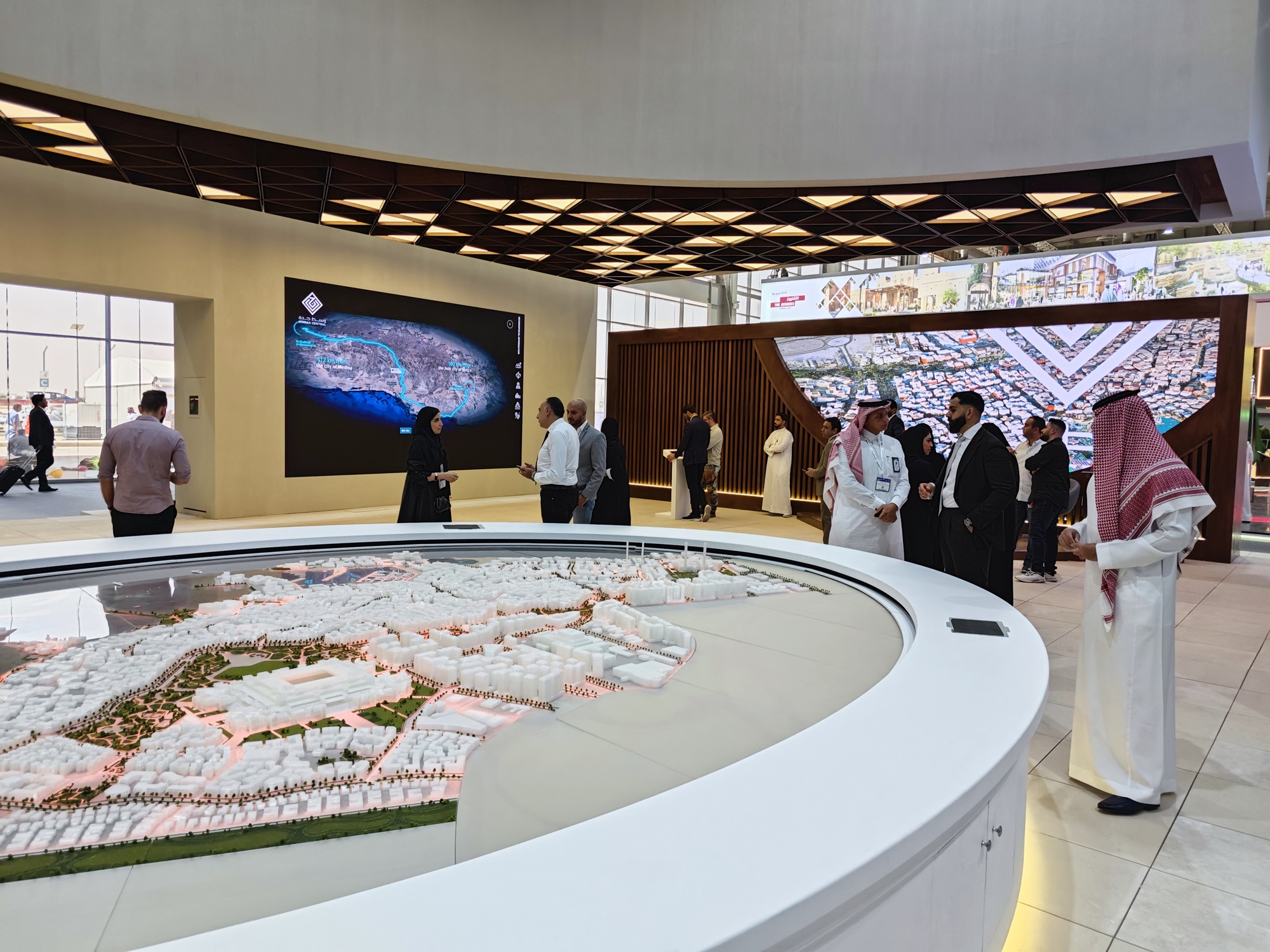
Tools Redefining Immersive Event Experiences
- Digital Twin Real Estate:
Virtual replicas of physical spaces enable attendees to navigate buildings, explore neighborhoods, or visualize architectural changes. See our Digital Twin Solutions and the Jeddah Central Development Company Digital Twin Project for real-world examples of how digital twins enhance planning and presentations. - AR and VR Integrations:
Augmented and virtual reality let attendees interact with 3D objects, test product customizations, or preview off-plan properties. This engages audiences in ways traditional images or videos cannot. - Projection Mapping and Holograms:
Transforming walls, floors, or entire venues into dynamic canvases, projection mapping adds a wow factor to product demos and brand stories. - Interactive Displays and Unreal Engine:
By using Unreal Engine’s high-fidelity rendering and real-time adaptation, events can feature realistic simulations that respond to attendee input. This technology is critical for both immersive event experiences and digital twin real estate visualizations, as explained in Digital Twins for Real Estate: Why Unreal Engine Outshines Unity.
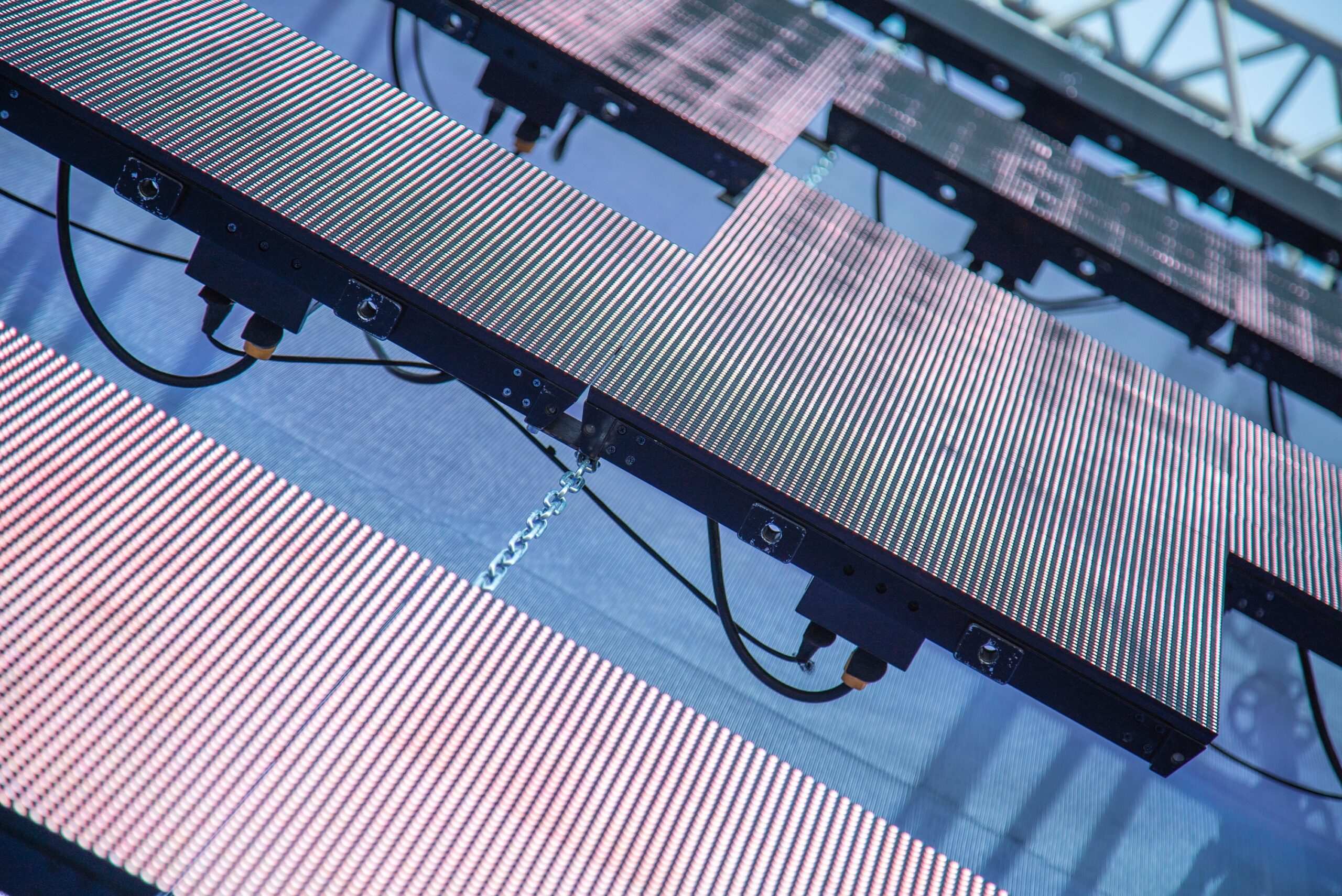
Overcoming Common Challenges
- Managing Complexity:
Integrating AR, VR, and digital twins can be technically demanding. Partner with experts like Chameleon Interactive, who specialize in cohesive solutions and can ensure seamless integration. Contact us to discuss tailored strategies. - Ensuring Accessibility and Usability:
Some attendees may be new to immersive tools. Offering short tutorials or user-friendly interfaces reduces intimidation and encourages participation. - Reliable Connectivity:
Stable internet infrastructure is essential for real-time data and multi-user experiences. Collaborate with venue providers to secure robust connectivity, and consider 5G options where available. - Budget Alignment:
Start with a focused set of immersive features—like a single AR demo or a digital twin tour—before scaling up. Demonstrating ROI early on helps justify future investments in immersive event technology.

Emerging Trends in Immersive Event Tech
- AI-Driven Personalization:
As AI advances, events can deliver individually tailored experiences, recommending content or adjusting environments based on attendee behavior. - 5G Connectivity and Hybrid Models:
Rapid data speeds and stable connections allow for richer hybrid experiences, linking on-site guests with remote participants in seamless, interactive ways. - Sustainability and Green Solutions:
Virtual events and energy-efficient displays help brands reduce their environmental footprint while maintaining immersive quality. - Wearables and Lightweight Devices:
Smaller, more comfortable AR/VR wearables promise more natural interactions and less friction for attendees. - Expanding Role of Digital Twins:
Digital twin real estate simulations will evolve to include event planning, allowing organizers to test layouts, attendee flows, and experiential tweaks before the big day.
Crafting Unforgettable Experiences
By combining immersive event technology with strategic content and storytelling, brands can deliver events that linger in attendees’ memories. Whether it’s a VR-driven product demonstration, a digital twin tour of a future development, or an interactive LED wall telling a compelling narrative, the key is to connect emotionally with your audience.
For example, by blending interactive tools at product launches or trade shows, companies can stand out from competitors who rely on static displays. The end result? Enhanced engagement, better lead quality, and stronger brand loyalty.
Conclusion
Immersive event technology is redefining how events are designed, executed, and experienced. By integrating tools like VR, AR, and digital twins, brands can captivate audiences, create memorable experiences, and achieve measurable results. While challenges exist, the right strategies and partnerships can unlock the full potential of immersive event tech.
Ready to transform your events with cutting-edge immersive event technology? Explore Chameleon Interactive’s Digital Twin Solutions and see how we can help you create unforgettable experiences that resonate with your audience.
Further Reading:
- Transform Real Estate Marketing at Trade Shows with Digital Twin Technology
- 7 Pillars of Digital Twins: Revolutionizing Real Estate Marketing and Sales
- Unreal Engine for Digital Twins
Let’s build the future of immersive events together!
FAQ: Immersive Event Technology
1. What is immersive event technology, and how does it differ from traditional event setups?
Immersive event technology goes beyond static displays by fusing digital interactions—like VR, AR, or interactive technology for events—into a single, dynamic experience. Attendees can move through virtual spaces, engage with 3D objects, and alter the environment in real time, delivering a higher level of engagement than conventional stage-and-screen formats.
2. How can interactive technology for events lead to deeper attendee engagement?
By letting participants shape their journey, interactive technology for events empowers them to explore product demos, digital twins, or interactive booths at their own pace. This autonomy boosts emotional resonance, creating more memorable brand encounters that extend far beyond the physical venue.
3. What role does event interaction technology play in creating immersive event experiences?
Event interaction technology integrates data-driven insights with real-time visuals, allowing for tailored storytelling, responsive lighting, and multi-user collaboration. These live feedback loops produce immersive event experiences where attendees feel directly involved in shaping the content, intensifying overall brand recall.
4. Is immersive event tech cost-effective for smaller gatherings, or is it mainly for large expos?
While large expos and conferences often showcase the most elaborate immersive event experiences, smaller events also benefit from scaled-down solutions. Tools like AR-enabled mobile apps or compact digital twin models can still deliver high-impact experiences without the massive budget typically required for stadium-sized events.
5. How do immersive event experiences integrate digital twins, especially in real estate or property showcases?
During immersive event experiences, organizers often present a digital twin for real estate to simulate properties under construction. Potential buyers or visitors explore realistic 3D environments, interact with customizable finishes, and visualize layouts. This approach blends how live events interact with interactive technologies to offer compelling, data-driven insights before a physical building even exists.
